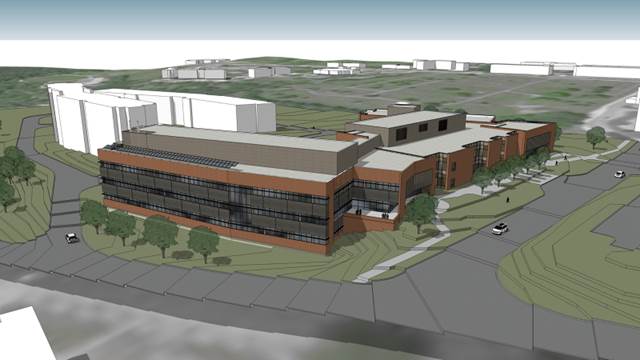Sesquicentennial Hall in early stages of design
Associate Dean of New Initiatives sheds light on Platteville’s newest project
Construction on a ambitious new UW-Platteville addition will start in the fall of 2020. Sesquicentennial Hall will be an addition to the already-existing Engineering Hall, mostly to the south side but a bit to the north side as well.
The northern addition will impair the main entrance of Engineering Hall for a short time, during which it will be closed.
“That’s going to be the biggest inconvenience to people,” Associate Dean of New Initiatives Philip Parker said.
In terms of parking, Parker admitted that there will be less parking spaces in the faculty/staff lot that is currently right behind Engineering Hall.
“It should not affect in any way the residence halls [Bridgeway Commons and Southwest Hall],” Parker said.
Aside from a bit of dust and some noise from the dump trucks using the driveways, student life will be uninterrupted.
“This project is going to be four times more than Williams Fieldhouse in terms of cost and complexity,” Parker said.
He doubts that the walking path from Southwest and Bridgeway up to campus will be affected at all.
The project is currently 35% of the way through the design stage; the building designers are aware where the walls will be and where some fuses and rooms will be, but there’s still a lot of planning to do.
The full design for the building will be done around the end of this school year and will go to bidding in the summer.
“[Sesquicentennial Hall] is going to give us the capacity to educate more engineering students,” Parker said.
The addition will allow for all engineering and computer science majors to learn under one roof. The university will be moving civil and mechanical engineering out of Ottensman Hall, as well as software engineering and computer science out of Ullrich.
“The lines between our engineering disciplines are blurring…there’s a whole lot of overlap, and companies get that,” Parker said.
The new addition will also include a 20,000 square foot innovation center, which will house one of the biggest “maker spaces” in the Midwest.
Some students are concerned with the cost and the impact of this addition.
“Why don’t they fix the old buildings on campus? We could be getting the asbestos out of Warner or moving forward with the Boebel renovations; we have the money to do that,” senior professional writing and literature major Ryan Teutschmann said.
Aside from these concerns, the Sesquicentennial addition will have a very positive impact on campus. Parker was very excited about the maker space, a place where students can bring their ideas and work with the staff space, a place where students can bring their ideas and work with the staff to build a prototype. It will have everything from sewing machines to 3D printers; anything that the creative mind could practically think of.
Parker explained that the addition itself will be a learning tool. For example, a lot of the steel structure will be exposed and not hidden behind drywall so that civil engineers can learn about steel structures even on their walk to class.
There will be over 100 center point study spaces, intentionally designed to be close to the faculty.
Parker shared that the addition will be a LEED (Leadership in Energy and Environmental Design) certified building, the most popular green building certification. This will be the first educational engineering to be LEED certified building in Wisconsin.
LEED certification is a growing certification program across the world. This certification program was developed by the United States Green Building Council.
This program has a set system for rating the design, maintenance and construction for public buildings, homes and neighborhoods. This focuses on a progressive push for a better responsibility on the environment and how to use those resources correctly all while being efficient.




